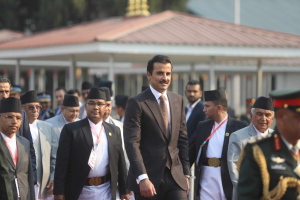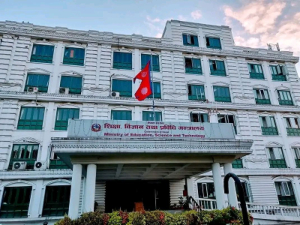On 15th February, 2020, South Korea had 28 confirmed cases of the novel coronavirus. On the same day, the United States had 15.
As of 26th March, 2020, South Korea had 9,332 confirmed cases of the virus – 4,665 currently infected, 4,528 recoveries, and 139 deaths. The United States on the same day had 85, 740 cases – 82,569 active cases, 1,868 recoveries and 1,303 deaths.
Why the difference, you ask? Early Intervention.
South Korea reportedly got into action as soon as news about the outbreak in Wuhan began – as early as January. By the time the virus arrived, they were prepared. Meanwhile, the United States downplayed the virus – in one of the worst handled health emergency, President Trump continued to downplay the virus, at one time even saying it would get better with warmer weather (without evidence).
The cost of downplay was huge for the citizens of United States – on Friday morning, their numbers had surpassed China’s.
Why are we telling you all these?
For a reason.
The role of the state and the public is equal during the COVID-19 crisis – for instance, you might be obeying the lockdown and preventing the spread of the disease, but what is the role of the state?
To lock us up and watch the show unfold?
Since the start of the coronavirus pandemic, the World Health Organisation (WHO) has emphasized upon the importance of testing. “Testing is the basis of public health detective work to shut down an epidemic”. WHO’s Director Dr Tedros Adhanom Ghebreyesus has said.
As per WHO, three things are important:
- Tracking down cases with symptoms and testing them,
- Tracing the people they’ve contacted,
- Quarantine until they are no longer infectious.
We feel sad to tell you, Nepal isn’t doing so.
- Lack of Tests:
According to data provided by the Health Ministry, from 22nd March (since the second case of coronavirus was confirmed in Nepal) to 26th March (5 days), 186 tests were done.

186 tests in 5 days is too less – if you look at it, 158 passengers flew with the second confirmed case, and another 180 passengers with the third case. Furthermore, news reports suggested the third patient threw a party in Kathmandu before leaving for his hometown.
186 tests amidst the hundreds of people who probably came in contact with the two suggests a sincere lack of number of tests by the government.
Note: This report was compiled on the 27th of March, 2020. By the time we were ready to publish it, Nepal’s fourth case was identified in Dhangadhi. The patient, a 34 year old flew from Dubai via Delhi, took a domestic flight and a public transport to his home – contacting thousands as he disobeyed self-quarantine rules.
2. Lack of tracing:
Let alone testing, the government is unable to even trace all passengers aboard the two aircrafts.
The recklessness can be attributed to Nepal’s immigration department handling arrivals . According to reports, most incoming passengers who were migrant workers didn’t fill the forms properly.
The government didn’t follow up on the self-quarantine rules too –today incoming passengers who flew the two aircrafts are being found as far Sunsari in the east and Kailali in the west.
Note: On the 23rd, after a couple of people who knew others flying with the second case of coronavirus in Nepal contacted Aawaaj News seeking government contact information – we relayed the same. As a follow up, we called up the numbers, and they assured us they would reach out to all passengers.
Fast forward to the 25th, we received two calls from the Ministry of Health – they were still trying to locate the people who were aboard the aircraft. One even inquired about my health, assuming I was one of the passengers.
3. Expand tests to the asymptomatic:
Until a cure is found, our only approach is to flatten the curve – to flatten the curve we need to gain speed. Our authorities must be swift – in identifying, testing and isolating. It can be assumed we are in a race with the virus – once we have tracked, tested and isolated, we need to expand our tests to the asymptomatic – that is exactly what South Korea did, and flattened its curve.
We continue to receive reports that people who are asymptomatic, despite travel history to affected areas are being denied a COVID-19 test.
4. Do we have enough isolation facilities?
As per government reports we have 613 beds available for isolation.

(See image)
5. Concerns of medical supplies:
Increasing reports about lack of PPE (Protective Personal Equipment) is also concerning – we were informed an aeroplane will be flying to China on Saturday to bring in medical equipment.
The reason we are talking about PPEs is because, in Indonesia seven doctors and one nurse have died. The reason? Lack of PPEs and reliance on cheap plastic raincoats to protect themselves from virus in the hospitals.
Furthermore, provincial hospitals are claiming difficulties in sending swabs to Kathmandu due to the lockdown – we haven’t received an update on that too. What is the proposed plan?
Conclusion:
As we said earlier, the public and the government need to work in coordination to combat the problem. Nepal’s boon is that the virus arrived late – we have so many examples to learn from. While we quarantine ourselves at home for the sake of public health, the government needs to assure us that it is working – on a speed which is higher than an average of 50 tests a day.
The government must release credible information on how many people have been traced, ensure adequate medical supplies to the people who are combating the disease in the frontlines, drastically increase the number of tests, and expand them to the asymptomatic. We are already behind on building testing centres in all provinces – inform us about their status.
Remember, the government is responsible for millions of Nepalis who have forsaken their social, economic and personal rights for the sake of public health – what is the government doing?
Note: The above report has been prepared in consultation with someone who is involved with health and policy making in Nepal. Unfortunately, we cannot release her name.



